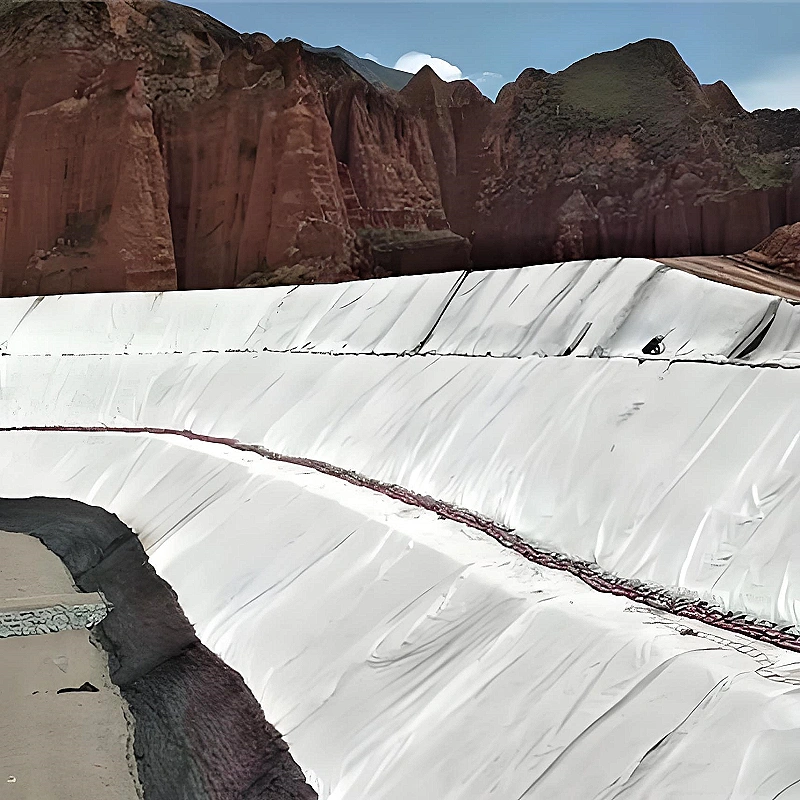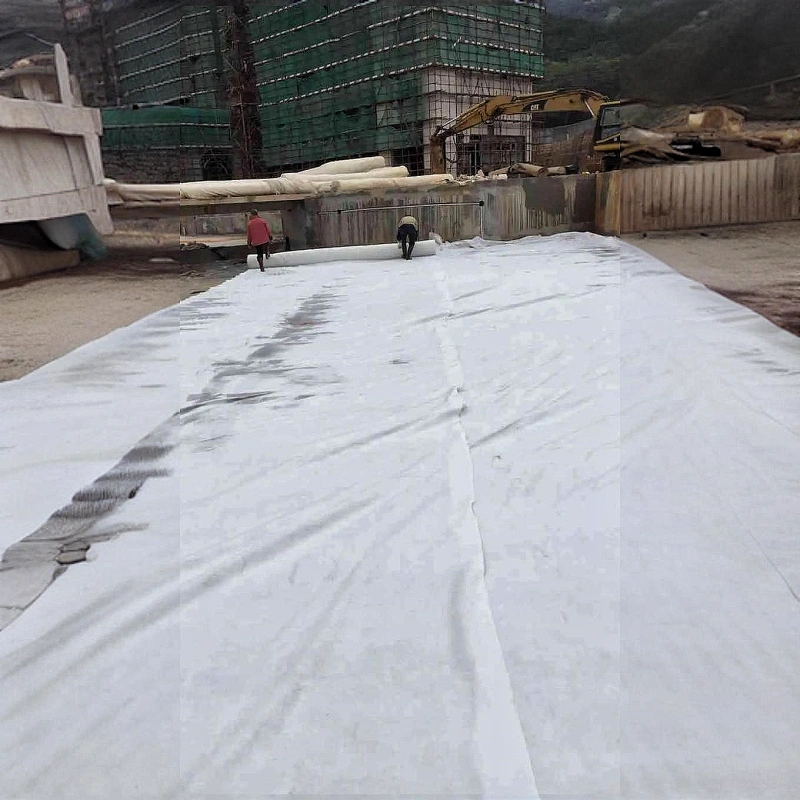Geotextiles play a crucial role in modern civil engineering projects, offering a versatile and sustainable solution to various challenges encountered in construction, infrastructure development, and environmental protection. These synthetic fabrics, engineered to withstand high loads and environmental stresses, have become indispensable components in the construction industry, providing reinforcement, filtration, drainage, and erosion control functionalities. In this article, we will explore the applications, benefits, and importance of geotextiles in civil engineering projects, highlighting their role in enhancing infrastructure sustainability.
804564.webp)
Type of Geotextiles
Geotextiles are engineered fabrics made from synthetic fibers and are classified into various types based on their manufacturing process, composition, and intended application. Each type of geotextile serves specific purposes in civil engineering projects, offering a range of functions and benefits. Here are some common types of geotextiles along with their applications and functions in engineering:
Woven Geotextiles
Applications: Woven geotextiles are commonly used for applications requiring high tensile strength, such as soil stabilization, reinforcement of embankments, and separation of different soil layers.
Functions: They provide excellent filtration properties, allowing water to pass through while preventing soil particles from migrating, which helps in maintaining the structural integrity of roadways, railways, and retaining walls.
Non-Woven Geotextiles
Applications: Non-woven geotextiles are versatile and find applications in various civil engineering projects, including drainage systems, erosion control, and soil separation.
Functions: They offer superior filtration and drainage capabilities, making them ideal for applications where water flow control and soil retention are essential. Non-woven geotextiles are also used as cushioning and protection layers in geomembrane installations.
Needle-Punched Geotextiles
Applications: Needle-punched geotextiles are commonly used in drainage applications, reinforcement of embankments, and protection of geomembranes.
Functions: They have a unique structure with fibers mechanically entangled through needle punching, providing excellent filtration, drainage, and separation properties. Needle-punched geotextiles are highly durable and resistant to punctures, making them suitable for demanding applications.
Composite Geotextiles
Applications: Composite geotextiles combine different types of geotextiles or incorporate other materials such as geomembranes or geogrids. They are used in applications requiring multiple functions, such as drainage, filtration, reinforcement, and protection.
Functions: Composite geotextiles offer enhanced performance and versatility, allowing engineers to address complex engineering challenges effectively. They are utilized in various infrastructure projects, including landfill liners, coastal protection, and road construction.
Geotextile Tubes
Applications: Geotextile tubes, also known as geotextile containers or geotextile bags, are used for dewatering, shoreline protection, and hydraulic engineering projects.
Functions: They are filled with sediments, sludge, or other materials and act as temporary or permanent structures for containment, dewatering, and erosion control. Geotextile tubes provide efficient sediment retention and dewatering capabilities, making them valuable in environmental remediation and construction projects.
Geotextiles come in various types, each offering specific properties and functions tailored to meet the requirements of different civil engineering applications. Whether it's soil stabilization, erosion control, drainage, or containment, geotextiles play a vital role in enhancing the performance, durability, and sustainability of infrastructure projects worldwide.

Applications in Civil Engineering
Geotextiles find widespread applications across various civil engineering disciplines, including:
Soil Stabilization: Geotextiles are used to stabilize soil by providing tensile strength and reducing lateral movement. They are commonly employed in road and railway construction to reinforce embankments, subgrades, and retaining walls, enhancing their stability and load-bearing capacity.
Erosion Control: Geotextiles act as erosion control barriers, preventing soil erosion on slopes, riverbanks, and coastal areas. By effectively retaining soil particles while allowing water to pass through, geotextiles mitigate erosion and protect vulnerable areas from environmental degradation.
Drainage Systems: Geotextiles serve as integral components in drainage systems, facilitating the efficient flow of water away from structures and foundations. They are used in combination with aggregates or drainage pipes to provide filtration and prevent clogging, ensuring optimal performance of drainage networks in infrastructure projects.
Filtration: Geotextiles act as filtration barriers, allowing water to pass through while retaining soil particles and contaminants. They are utilized in geotextile tubes, sediment control devices, and shoreline protection systems to filter pollutants, improve water quality, and preserve natural habitats.

Benefits of Geotextiles
The incorporation of geotextiles in civil engineering projects offers several key benefits:
Improved Soil Stability: Geotextiles reinforce soil structures, reducing settlement and enhancing stability, thereby extending the lifespan of infrastructure assets such as roads, bridges, and embankments.
Enhanced Drainage: Geotextiles facilitate efficient drainage, preventing water accumulation and soil saturation, which can lead to erosion, instability, and structural failure.
Cost Savings: By reducing the need for extensive earthwork, materials, and maintenance, geotextiles contribute to cost savings over the lifecycle of civil engineering projects.
Environmental Sustainability: Geotextiles promote sustainable construction practices by minimizing soil disturbance, preserving natural resources, and mitigating the environmental impact of infrastructure development.

Importance in Infrastructure Sustainability
In an era marked by increasing urbanization, population growth, and climate change, the sustainability of infrastructure has become paramount. Geotextiles play a crucial role in advancing infrastructure sustainability by:
Extending Infrastructure Lifespan: By enhancing soil stability, drainage, and erosion control, geotextiles help prolong the lifespan of infrastructure assets, reducing the need for frequent repairs and replacements.
Enhancing Resilience to Environmental Challenges: Geotextiles improve infrastructure resilience to environmental hazards such as floods, earthquakes, and landslides, ensuring continuity of essential services and minimizing disruption during natural disasters.
Promoting Green Infrastructure Solutions: Geotextiles enable the implementation of green infrastructure practices such as permeable pavements, green roofs, and sustainable drainage systems, which contribute to ecosystem services, urban biodiversity, and climate adaptation.
Geotextiles represent a fundamental component of modern civil engineering practice, offering versatile, cost-effective, and sustainable solutions to a myriad of challenges encountered in infrastructure development. From soil stabilization and erosion control to drainage and filtration, geotextiles play a vital role in enhancing the resilience, longevity, and sustainability of infrastructure projects worldwide. As the demand for resilient and environmentally-friendly infrastructure continues to grow, the importance of geotextiles in civil engineering will only continue to increase, shaping the future of sustainable infrastructure development.

897.webp)
942.webp)
237.webp)